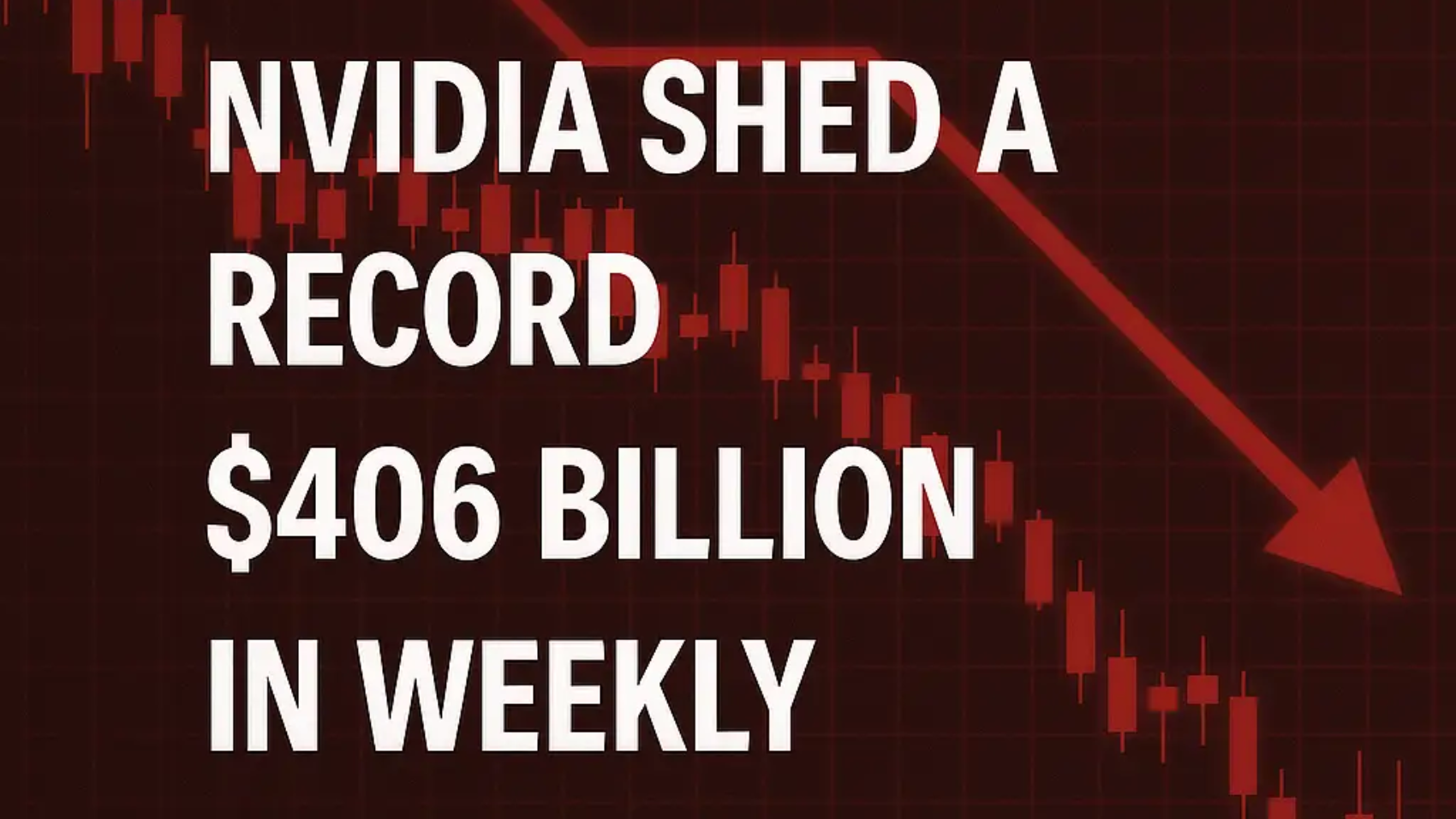In September 2024, Nvidia — the undisputed AI hardware titan — made history. But not in the way investors hoped. In just five trading days, Nvidia shed a record $406 billion in weekly market value. The largest weekly loss ever recorded by a U.S. company. The shockwaves reached far beyond Wall Street, rattling confidence in AI stocks and prompting whispers of a brewing bubble.
But was this crash a warning shot or just market turbulence after an overheated rally?
As a seasoned tech and finance content writer immersed in market cycles and the AI sector, I’ll unpack what caused this stunning drop, the implications for investors, and what you can learn from it. More importantly, we’ll separate hype from fact and offer people-first insights you won’t find in clickbait headlines.
What Actually Happened? A Timeline of the Crash
Nvidia’s decline didn’t happen in a vacuum. Here’s how the week unfolded:
- Early September 2024: Investor optimism remained high following a year of AI-fueled gains. Nvidia had added over $1.3 trillion in market cap in 2024 alone.
- Midweek: Nvidia’s stock began dropping following signs of institutional sell-offs and lower-than-expected forward guidance.
- By Week’s End: The company lost over $406 billion, equating to a 13.9% weekly decline.
For perspective: That’s more than the entire market cap of AMD and Qualcomm — combined.
Why Did Nvidia Shed a Record $406 Billion in Weekly Market Value. A Breakdown of Real Causes
Understanding this event requires nuance — not panic. Here are the key reasons the sell-off happened, based on verified sources like Bloomberg and MarketWatch:
1. Overstretched Valuation and Profit-Taking
- Nvidia had been trading at extremely high price-to-earnings (P/E) ratios, fueled by AI hype.
- Institutional investors likely began taking profits after months of gains.
2. Tepid Forward Guidance
- Nvidia’s guidance, while still positive, failed to meet sky-high market expectations.
- Investors expected acceleration, not stabilization.
3. Supply Chain and Product Concerns
Delays and uncertainty around the next-gen Blackwell AI chips raised red flags.
4. Regulatory Headwinds
The U.S. Department of Justice opened an antitrust investigation into Nvidia’s partnerships in the AI sector.
5. Sector-Wide Sentiment Shift
Peers like Super Micro Computer and Broadcom also dropped sharply, suggesting broader unease about the AI trade’s sustainability.
Why This Loss Was So Big: The Role of Volatility
Nvidia’s 30-day realized volatility reached 80, about:
- 4x higher than Microsoft’s,
- 2x higher than Bitcoin’s.
In fact, Bloomberg described Nvidia as “making Bitcoin look calm” — an apt metaphor for the stock’s erratic behavior.
What This Means for You (Whether You’re an Investor or Tech Follower)
If You’re a Retail Investor:
- Don’t chase rallies without understanding valuation.
- Volatility is not always your enemy — but it requires a strategy.
- Nvidia is still fundamentally strong, but that doesn’t mean it’s immune to overpricing.
If You’re in Tech or AI:
- The crash reminds us that AI enthusiasm must be balanced with realistic timelines.
- Enterprise AI adoption is growing, but monetization takes time — especially outside hyperscalers.
Common Misconceptions Debunked
❌ “This proves the AI bubble has burst.”
Not entirely. While sentiment cooled, Nvidia is still up over 100% YTD. Most analysts agree this is a correction, not collapse.
❌ “Nvidia is no longer a good investment.”
False. Short-term corrections do not erase long-term value. Nvidia retains a near-monopoly on AI GPUs and dominates data center markets.
❌ “Only Nvidia fell — the rest of AI is fine.”
Actually, AI-adjacent stocks also dipped. This was part of a broader tech repricing moment.
Unique Insights: My Real-World Perspective
Having covered previous tech crashes — from the Dot-Com bubble to Meta’s 2022 nosedive — here’s what history teaches us:
- Corrections are not crashes. This felt dramatic because of Nvidia’s size, but tech stocks often endure 15–25% dips before resuming uptrends.
- Retail investors often buy high and sell low. Avoid panic-selling. Use technical and fundamental analysis to guide entry/exit points.
- AI’s potential is real — but so is execution risk. Overpromising on AI outcomes without infrastructure or product readiness is risky. Nvidia isn’t immune to this, despite its hardware lead.
FAQs
Is this the biggest drop ever for a single company?
Yes — Nvidia’s $406 billion weekly loss is a new record, surpassing even Meta’s prior $251 billion single-day wipeout.
Should I sell my Nvidia stock now?
Not necessarily. Re-evaluate your long-term thesis. If you’re investing for 5–10 years and believe in AI, this may be a dip — not a disaster.
Is the AI bubble real?
There’s definitely AI hype, but “bubble” implies systemic collapse. So far, enterprise demand and R&D investment remain strong.
Conclusion: What You Can Take Away
Nvidia’s $406 billion market value wipeout was historic, but not catastrophic. It offers a teachable moment for every market participant: even the biggest players can falter when expectations outrun reality.
But with foundational strength, long-term demand for AI infrastructure, and continued innovation, Nvidia may well recover and lead again.
If you’re watching this space, do so with informed optimism — not blind hype or panic. In tech and investing alike, those who last are those who learn.
👉 Bonus Tip: Set up alerts for Nvidia earnings, regulatory updates, and product launch cycles. Tools like Google Finance or TradingView can help you monitor volatility and act with discipline — not emotion.

